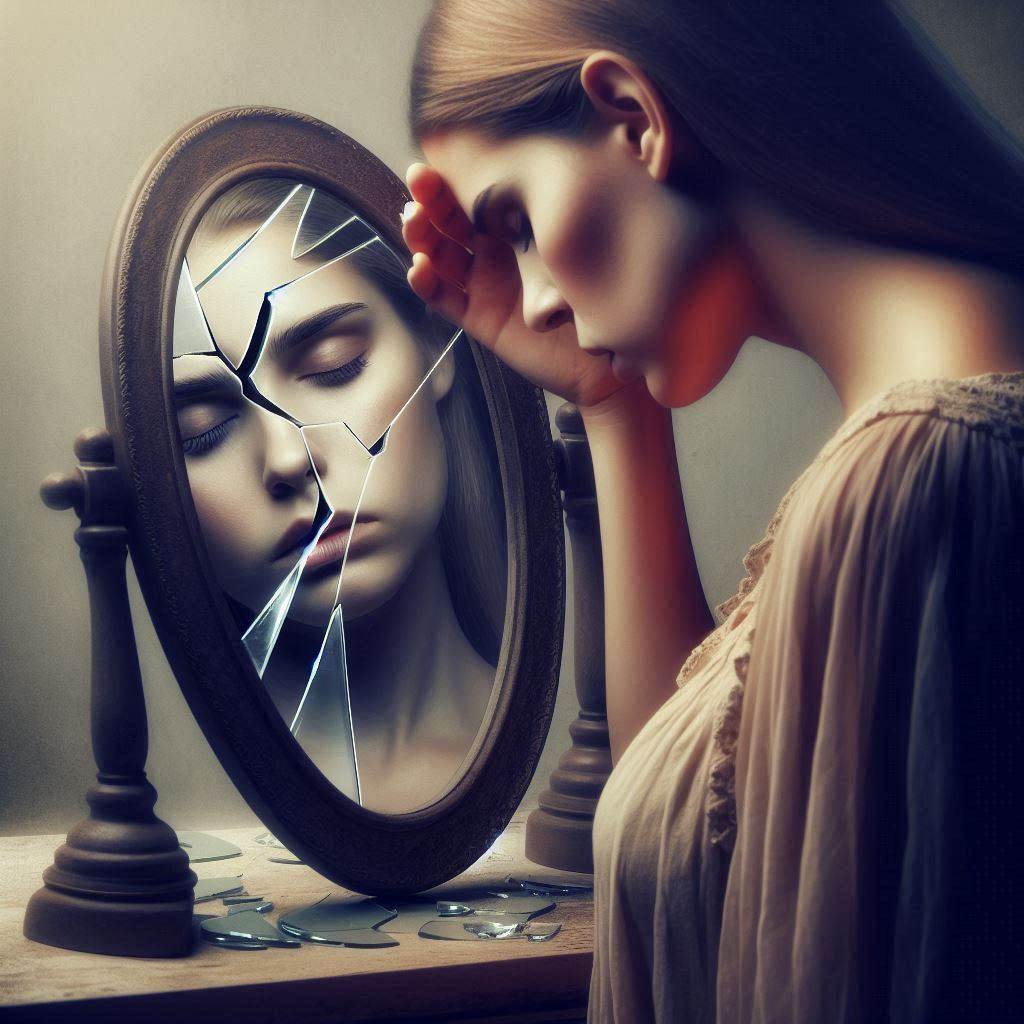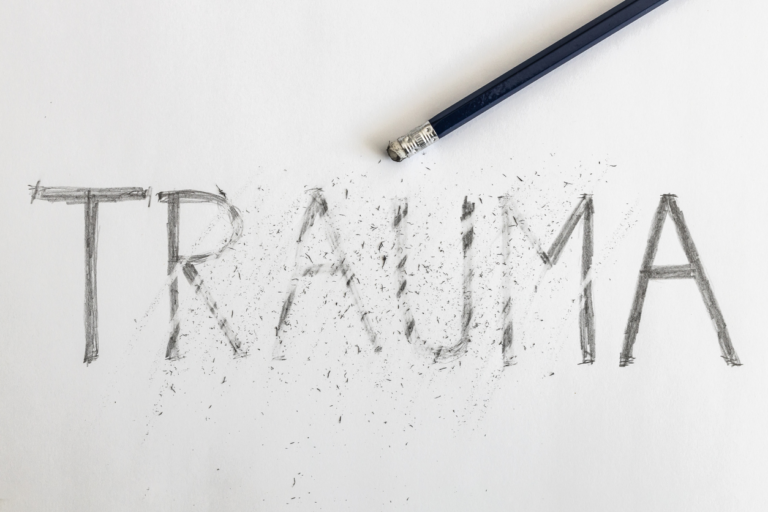Have you ever felt like you’re living in the shadow of someone else’s expectations, unable to access your true self? For many, trauma isn’t just a distant memory; it’s a daily reality that shapes perceptions, behaviours, and relationships. For individuals living with Post-Traumatic Stress Disorder (PTSD) and Complex Post-Traumatic Stress Disorder (CPTSD), the world can seem like a minefield of dangers, making it nearly impossible to cultivate trust and authenticity. In this post, we’ll explore the profound ways trauma influences our lives, from hypervigilance and identity theft to the intricate dynamics of relationships. Understanding this journey is a crucial step toward healing and reclaiming your narrative.
How Trauma Shapes Our Lives
For adults who haven’t faced repeated trauma, life often seems more straightforward. They possess a clear sense of identity, allowing them to navigate relationships with confidence and intuition. Decisions are made with a sense of security, and when relationships falter, they can step away without the overwhelming fear of abandonment. They don’t spend their energy worrying about what’s going on in others’ minds or whether they’re safe in every moment.
For individuals with (C)PTSD, the experience is radically different. Whether the trauma stems from childhood abuse, neglect, or adult experiences such as violence or betrayal, the brain becomes wired for survival. The trauma creates a feedback loop where fear becomes the primary lens through which the world is viewed. Every interaction, every noise, every change can feel like a potential threat. This heightened state of hypervigilance is a mark of both PTSD and CPTSD.
Hypervigilance, while initially adaptive during dangerous situations, becomes exhausting over time. It prevents individuals from ever truly relaxing, even in moments of safety. For someone with (C)PTSD, the body and mind are often stuck in survival mode, leading to long-term psychological and physical effects. This state of heightened anxiety leads to chronic stress, which erodes the body’s immune system, disrupts sleep, and strains mental health.
The burden of cptsd
Living with (C)PTSD often means carrying the weight of fear, anxiety, and anger every day. It’s not just the trauma that haunts individuals—it’s the lasting impact it has on their emotional regulation. Anger can become a defense mechanism, a way to protect oneself from perceived threats. But when this anger flares up unexpectedly, it can damage relationships, creating a cycle of conflict, guilt, and isolation.
Anxiety manifests in countless ways, from obsessive thoughts to debilitating panic attacks. It becomes difficult to stay grounded in the present moment because the brain is always anticipating future dangers. In many cases, this anxiety triggers dissociation—a sense of being disconnected from yourself, your surroundings, or even reality.
Dissociation is one of the more subtle and misunderstood symptoms of trauma. It can feel like parts of you shut down to protect you from overwhelming emotions. You may struggle to remember conversations, feel as if you’re watching your life from outside your body, or lose chunks of time. Dissociation creates distance not just from painful memories but from the very experiences that allow us to feel human and connected.

The long shadow of trauma: The Impact on Body and Mind
Trauma doesn’t stay confined to the mind—it resides in the body, too. When the brain is stuck in survival mode, the body reacts by constantly being in a state of high alert, producing stress hormones like cortisol. Over time, this chronic stress leads to a variety of physical health issues. Many people with (C)PTSD suffer from chronic fatigue, headaches, digestive issues, or even autoimmune disorders. These conditions are the body’s way of saying, “I’ve been fighting too long.”
Mentally, trauma’s long-term impact can be just as debilitating. Anxiety takes many forms: obsessive worrying, sudden panic attacks, and an inability to stop thinking about what could go wrong. Rather than living in the present, your mind constantly returns to the past, replaying traumatic events or imagining worst-case scenarios.
This combination of physical and mental symptoms traps individuals in a cycle of survival. The mind tries to stay ahead of danger, while the body suffers from the toll of never being able to fully relax. Healing from trauma means addressing both of these aspects—learning to calm the body and rewire the brain’s responses to perceived threats.
Trauma’s Impact on Relationships
Trauma also affects how you engage with others. For many trauma survivors, relationships become arenas of fear rather than connection. Trust, a fundamental component of any healthy relationship, feels nearly impossible to build. This lack of trust is not just in others—it often extends to oneself. You might doubt your ability to make good decisions, or constantly second-guess your feelings and perceptions.
Many people with C(PTSD) develop a strong focus on what others are thinking and feeling, almost as a survival mechanism. Understanding others’ emotions can be a helpful skill—it’s at the root of empathy. But for those with C(PTSD), this focus on others can become extreme. You may become so attuned to other people’s needs and reactions that you lose sight of your own. This response arises from a survival instinct to placate others in order to avoid conflict or rejection. Over time, fawning can lead to the complete abandonment of one’s own needs and desires.
This is where trauma commits “identity theft.” Constantly adjusting to others’ expectations or focusing on their needs leaves little room for you to discover your own identity. You might lose sight of what you want, who you are, or what values you hold. Over time, this loss of identity can make you feel disconnected from yourself, unsure of your place in the world, and unable to form healthy, balanced relationships.
A Path to Healing
Recognizing how trauma shapes our lives is the first step toward healing. Acknowledging the patterns and responses associated with (C)PTSD can help individuals reclaim their identities and rebuild meaningful connections.
Here are some strategies to begin the journey of rediscovery:
- Therapy: Engaging in trauma-informed therapy can provide a safe space to process emotions and experiences.
- Mindfulness Practices: Techniques like meditation, deep breathing, and yoga can help ground individuals in the present, alleviating anxiety and promoting self-awareness.
- Creative Outlets: Art, journaling, or music can be powerful tools for expressing emotions and connecting with one’s true self.
- Support Networks: Building connections with others who understand your journey can foster a sense of belonging and validation.
reclaiming your life
Trauma has a way of stealing so much from those who endure it—identity, relationships, joy, and trust. But healing is possible. Through awareness, therapy, mindfulness, and self-compassion, you can take the steps necessary to reclaim your life. You don’t have to be defined by your trauma.
You are not alone, and you have the power to heal. It’s a process, but with time and the right support, you can learn to live authentically, free from the shadows of your past.
references
- Van der Kolk, B. A. (2014). The Body Keeps the Score: Brain, Mind, and Body in the Healing of Trauma. Penguin Books.
- Walker, P. (2013). Complex PTSD: From Surviving to Thriving: A Guide and Map for Recovering from Childhood Trauma. CreateSpace Independent Publishing Platform.
- Herman, J. L. (1997). Trauma and Recovery: The Aftermath of Violence–From Domestic Abuse to Political Terror. Basic Books.
- Levine, P. A. (2010). In an Unspoken Voice: How the Body Releases Trauma and Restores Goodness. North Atlantic Books.
- Ogden, P., & Fisher, J. (2015). Sensorimotor Psychotherapy: Interventions for Trauma and Attachment. W.W. Norton & Company.
- Rothschild, B. (2000). The Body Remembers: The Psychophysiology of Trauma and Trauma Treatment. W. W. Norton & Company.
- Siegel, D. J. (2012). The Developing Mind: How Relationships and the Brain Interact to Shape Who We Are. The Guilford Press.
- Van der Hart, O., Nijenhuis, E. R. S., & Steele, K. (2006). The Haunted Self: Structural Dissociation and the Treatment of Chronic Traumatization. W. W. Norton & Company.
- Fisher, J. (2017). Healing the Fragmented Selves of Trauma Survivors: Overcoming Internal Self-Alienation. Routledge.
- American Psychiatric Association. (2013). Diagnostic and Statistical Manual of Mental Disorders (DSM-5). American Psychiatric Publishing.
- Schiraldi, G. R. (2009). The Post-Traumatic Stress Disorder Sourcebook: A Guide to Healing, Recovery, and Growth. McGraw-Hill Education.
- Porges, S. W. (2011). The Polyvagal Theory: Neurophysiological Foundations of Emotions, Attachment, Communication, and Self-regulation. W.W. Norton & Company.



